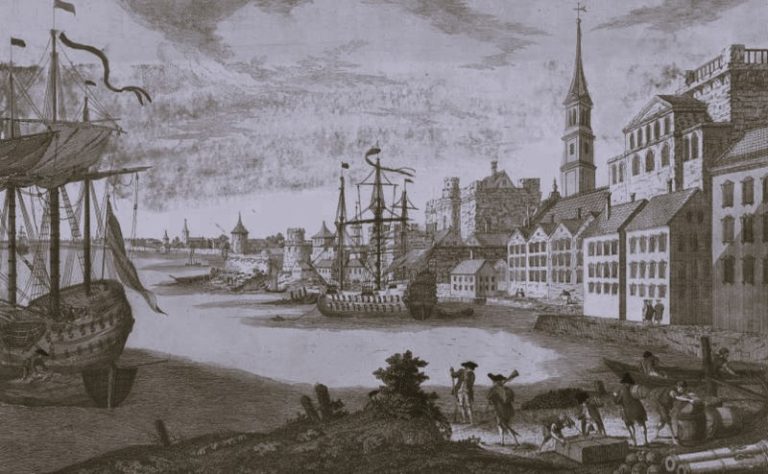

For decades, they’ve sustainably managed their community forest, relying on it for food, shelter and livelihoods.
By Caleb Stevens, Sarah Parsons, Katie Reytar and Bill Dugan
Photos by: André D’elia
Introduction
The Yudja are one of many indigenous groups who call Brazil’s Amazon rainforest home. For decades, they’ve sustainably managed their community forest, relying on it for food, shelter and livelihoods.

But in the face of new roads, hydroelectric dams and mines, what will become of the Yudja and the forest they inhabit?
Community Forests and Climate Change
Indigenous Peoples and communities hold at least some legal rights to at least 513 million hectares(1.3 billion acres) of forest, 15.5 percent of the global total. These forests are typically governed by customary rights, rules and institutions that pre-date modern governments. While some national and local governments uphold communities’ rights to their forests, others undermine them by allowing settlers, ranchers or development projects to encroach. The map to the right shows what percentage of countries’ national forest area is owned by or designated for indigenous peoples or local communities.
Community forests are vital for sustaining communities who rely on them for shelter, medicine, food, livelihoods and a host of other resources. The integrity of community forests is also important for the global battle against climate change. The world’s legally recognized community forests hold 37 billion tonnes of carbon—29 times the annual carbon footprint of all the passenger vehicles in the world. Destroying these forests releases carbon dioxide into the atmosphere, fueling warming and associated impacts like drought, sea level rise and extreme weather.
Brazil’s Xingu River Basin

Brazil’s Amazon is the largest intact tropical forest in the world. Its Xingu River Basin covers 51 millionhectares (126 million acres) in the southwest part of the country. The region is home to about 600,000 people, including 24 ethnic indigenous groups that inhabit the region’s legally recognized community forests, including the Xingu Indigenous Land, an area roughly the size of Belgium. Orange areas on the map to the right indicate community forest lands in the Brazilian Amazon; the Xingu Indigenous Land area is outlined in red.
The Xingu River Basin also supports countless species of plants, animals and fish, which are the primary source of protein for many Xingu indigenous peoples.
Indigenous Groups Are Good Forest Stewards

Many stakeholders use the forests of the Xingu River Basin, including logging companies, settlers, ranchers and more. Evidence shows that Indigenous Peoples are often better forest stewards than many other types of landholders.
The pink areas in the map to right indicate tree cover loss alerts, and the light green areas are lands held by indigenous groups. Tree cover loss rates within Xingu Indigenous Land are only 3 percent, significantly lower than the average in the Brazilian Amazon (7 percent). Communities within the Xingu region have a vested interest in sustainably managing their forests because they rely on them so heavily to support their lifestyles and livelihoods.
Meet the Yudja

The Yudja are just one of the indigenous groups residing in the forests of the Xingu River Basin. Originally from the northern Amazon, their small community consisting of three villages dates back more than 150 years, when they settled the area in order to flee newly arrived settlers, gold miners, rubber tappers and others.
Without the forests, there would be no Yudja. Almost everything they use comes from the surrounding trees and ecosystems. They use the Pindaiba tree to construct houses. They rely on the Guarantã tree for canoe-building and medicine. Even their cultural identity and religious beliefs are intertwined with the forests. For example, the Yudja believe that certain plants contain souls, and anyone who cuts them down is cursed.
“The forest is our market,” said Maiawako Juruna, a Yudja youth. “It has everything we need. It is our resource for life. The forest is our world.”
Protecting Forests, Curbing Climate Change
Along with the other 15 indigenous groups in the Xingu Indigenous Lands, the Yudja regularly patrol their borders. Each indigenous group coordinates their protection efforts under the Xingu Indigenous Land Association, an elected governing body representing all the Indigenous People of the Xingu Indigenous Land. These efforts prevent settlers, ranchers, illegal loggers and other groups from cutting down the forests that the Yudja call home.
Their efforts also help curb climate change. In the map to the right, the darker areas represent the richest carbon stocks. Forests managed by Xingu Indigenous Groups hold more carbon than other areas in the region.
The Threats Are Mounting
The Yudja have preserved their way of life and culture since time immemorial, but a changing world threatens to upset the delicate balance of the ecosystems they rely on. Development projects like dams, roads and mining concessions are encroaching on their land, putting forests, wildlife and livelihoods in jeopardy. The map to the right shows current mining sites, as well as applications for exploration, licenses and concessions throughout the Brazilian Amazon. Many of them overlap with lands held by Indigenous Peoples.
Two of the greatest threats to the Yudja Xingu River Basin communities include:

- Road 163: Originally established as a dirt road in 1973, it was recently paved in order to provide soy and other agricultural commodity producers with better access to two key river ports. But the 1,385 kilometer-long (860-mile) road also runs adjacent to Xingu Indigenous Land. Paving the road has already led to deforestation in the area, and the risk of further expansion threatens the remaining forests.

- The Belo Monte Dam: A massive hydroelectric project is currently under construction downstream of the Yudja along the Xingu River. It’s expected to begin operations in 2015—with serious consequences for neighboring tribes. Some estimates show that Belo Monte could divert 80 percent of the Xingu River’s water, degrade more than 1,000 kilometers (621 miles) of rainforest and displace 40,000 people. For tribes such as the Yudja who live upstream, the dam could mean a loss of river biodiversity (a principle source of protein) and an increase in land encroachments. But the Yudja’s greatest concern is that the dam is aharbinger of other disturbances yet to come, with more direct and serious effects on their forest lands.
A Threat to Communities, a Threat to the Climate

The Amazon has more than 2,000 indigenous territories, the majority of which are in Brazil. These forests alone store one-third of the Amazon’s above-ground carbon. If deforested, more CO2 would be released than is emitted annually by all the homes on earth.
While Brazil has reduced its deforestation rates over the past 10 years, proposed mining operations and hydro-electric dams—shown in the map to the right—and other activities threaten these forests, spurring tree cover loss and putting at risk nearly 20 percent of this stored carbon. Indeed, 28.4 percent of Brazilian Amazon’s Indigenous Lands are under consideration for mining operations.
Losing Community Forests Is a Global Problem

Deforestation is on the rise globally. Pink tree cover loss alerts in the map to the right indicate that the world lost 2.3 million square kilometers of forest from 2001-2013.
This rising tree cover loss threatens all forests and the ecosystem services they provide, including lands managed by Indigenous Peoples. Farming and logging is encroaching on forests in Nicaragua, Indonesia, Liberia and Papua New Guinea. Peru’s indigenous community lands lost 2.2 percent of their forests from 2000-2012. Ecuador’s community forests—which make up more than half of the country’s forest area—are being threatened by mining and hydrocarbon extraction. And these are just a few examples.
Governments Can Protect Communities and their Forests
Protecting and supporting community forests can safeguard people like the Yudja while also curbing climate change and protecting plants, waterways and wildlife. A recent report from the World Resources Institute and Rights and Resources Initiative analyzed ways that governments could reduce emissions by strengthening community forest rights.
Recommendations include:
- Provide Indigenous Peoples and local communities with legal rights to their forests;
- Protect their legal rights to their forests through enforcement and mapping their lands;
- Support forest communities with technical assistance and training to support sustainable forest management;
- Engage communities regarding investments that affect their forests to ensure they have the right to stop any attempt to extract resources from their lands without their consultation and consent; and
- Compensate communities for the climate and other ecosystem benefits they provide through carbon-trading schemes and other finance mechanisms.
Spread the Yudja’s Message

Ultimately what’s needed, though, is to make all forest stakeholders aware of the plight of people like the Yudja. Businesses, local and national governments, and citizens themselves can all play a role in protecting forests and strengthening community rights.
The Yudja are relying on people like you to spread their message. Share their story with your networks, download Securing Rights, Combating Climate Change, or learn more about community forests and land tenure at the World Resources Institute’s Land and Resource Rights project.
Originally published by the World Research Institute under an Open Data license.






